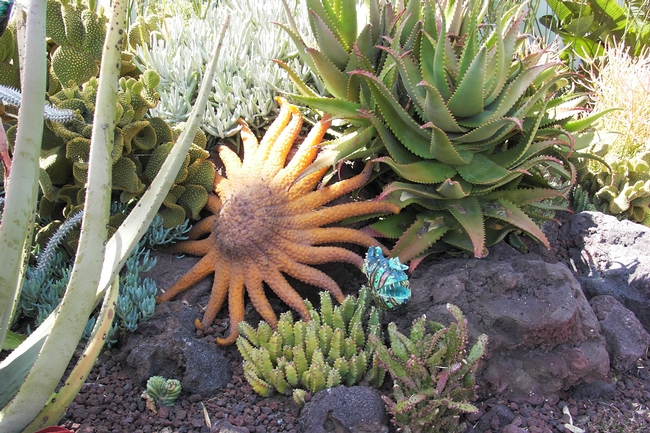Six steps to a sustainable landscape
Does a beautiful, low-maintenance, cost-saving landscape that actually improves the environment sound like a dream? If so, wake up, and welcome to the world of sustainable landscaping. Sustainable landscaping combines planning and maintenance practices for a low-waste, low-environmental impact garden space. Sustainable Landscaping in California: How to Conserve Resources and Beautify your Home Landscape, a new free publication by UC Agriculture and Natural Resources (ANR) demonstrates how creating a sustainable landscape is attainable.
Below are six easy steps, drawn from the recommendations in the 21-page publication, to illustrate the core practices in building the landscape of your dreams.
- Choose the right plant
Selecting appropriate landscaping plants for your climate zone is the first step in practicing sustainable landscaping. If you live in the California desert growing tropical plants is probably not the most practical choice for your landscape needs. Visit the California Garden Web to learn more about your climate zone, and find resources for choosing the right plants for your garden. - Water wisely
A typical California household uses one-third to one-half of its water intake in outdoor irrigation. How can a homeowner reduce water use? The answer is simple – water less. Overwatering an established landscape is more common than underwatering. Well-established plants should not be watered every day, reduce water use with a deeper, less frequent irrigation method. - Prevent pests (safely)
Put down the pesticide! Integrated Pest Management (IPM) offers solutions for managing insects, diseases, weeds and other organisms. IPM techniques include eliminating pest habitats, encouraging natural enemies (for example, ladybugs for an aphid infestation), hand-weeding and applying mulch to your landscape. Only use pesticides after all other options have been explored and in the smallest quantities possible. - Get to know (and love) your soil
Understanding what type of soil you have, its strengths and limitations is the first step toward a sustainable home landscape you can be proud of. Take steps to show your soil love and improve it with compost, mulch, and aeration as needed. To amend soil mix with compost evenly and deeply to avoid a layered effect that inhibits proper plant growth. - Welcome wildlife
For a landscape to be truly sustainable it should provide a balanced ecosystem for a variety of plants and wildlife. Roll out the welcome mat in your landscape for birds, butterflies and other wildlife by providing access to food, water, and shelter. - Conserve energy
Conserving energy in your landscape is easy. Retire power-tools and use hands tools like a shovel, rake or broom. Install light-emitting diodes (LED) lighting, which requires less energy to operate and lasts longer than traditional bulbs. Reduce energy use in your home by planting a shade tree which helps keep the home cooler during hot summer months.
The University of California Master Gardener Program extends to the public UC research-based information about home horticulture, sustainable landscaping and pest management. In exchange for the training and materials received from the University of California, Master Gardeners perform volunteer services in a myriad of venues. If you are interested in becoming a certified UC Master Gardener contact a local UC Cooperative Extension office in your county.




Posted by Hazel Owens on October 26, 2021 at 4:17 AM